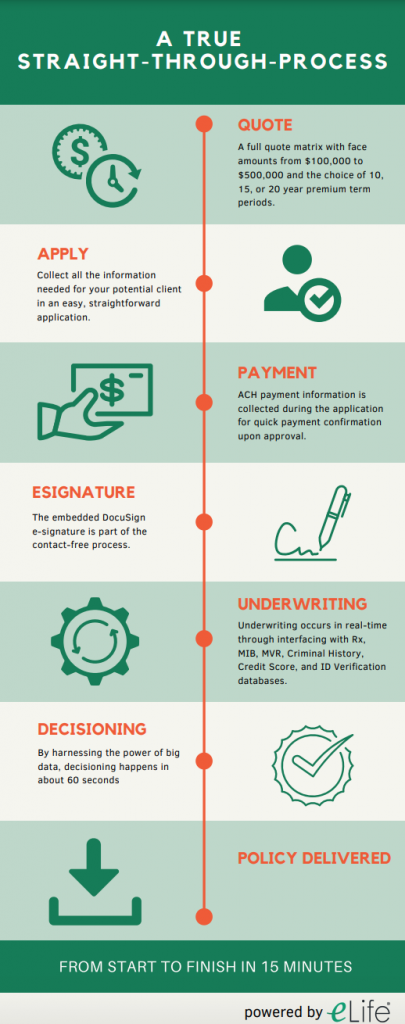The problem child of the life insurance industry is no longer a youngster. You could even say the problem child is now officially an adult. This problem child is "The Middle Market Coverage Gap." It has been with us for such a long time, I decided to give it proper noun status.
For many years now, industry trade publications and conferences have featured articles and presentations about the tens of millions of average American heads of households, parents and spouses who have little or no life insurance.
Ten years ago, everyone (including yours truly) who predicted that the life insurance industry would put a major dent in the coverage gap by 2020 was wrong. Not only wrong but super wrong.
LIMRA's recent "2021 Barometer Presentation on Perceived Need Gap" tells us that ownership of life insurance has decreased from 63% in 2010 to 52% in 2020. The presentation also tells us that there are about 258 million adults in the U.S. So, over 28 million fewer people have life insurance compared with just 10 years ago.
How is this even possible?
Writing policies on the lives of our middle market friends was supposed to become so much easier, faster and more cost-effective. We have been hearing about the increasing use of e-application forms, accelerated underwriting and digital signatures. We have heard how agents just need to "drop a ticket" and the carrier would take it from there.
But the fact remains: There were 28 million more adults with life insurance 10 years ago than there are today.
One of the explanations is that the life insurance industry is slow to change. It is guarded and staid. And I wouldn't change that for the world. The life insurance industry has long been one of the underpinnings of our economy, and it needs to stay that way.
The other important explanation is that the promised "straight-through process" has remained elusive.
I am fortunate to work with the biggest and the best life insurance sales and marketing organizations on a national scale, and they have told me:
"We've seen pieces of the total package necessary to do a fully automated and digital term life sale. But we don't have the whole nine yards yet. Our agents need to get from 'hello' to 'here's your in-force policy' in one conversation.
"It's not good enough to do an electronic quote, complete the e-application and then see everything go offline for medical exams, blood testing, urine testing and even sometimes sending out for an attending physician statement. This turns what could have been a 20- or 30-minute sale into 20 to 30 days or longer."
Twenty to 30 days or longer? Is that right? Unfortunately, it is. I've seen many times an attending physician statement take more than three months to obtain.
I'm celebrating my 40th anniversary in the life insurance industry this year. I can tell you that the life insurance buying process that has evolved into an expensive, tedious and time-consuming proposition for agents and customers alike is one of the primary reasons for the coverage gap.
See also: Life Insurance Is Ripe for Change in 2021
As the policy buying process and underwriting requirements became more tedious, the agent community backed away from calling on the middle market. Consumers, when they caught a glimpse of what was required to obtain a policy, backed away, as well. All that backing away resulted in our very own multitrillion-dollar coverage gap.
Keep in mind that the typical sale in the middle market is relatively small. The brokerage commission does not cover the processing of underwriting requirements, the scheduling and re-scheduling of medical exams or the sales calls that are often needed to "make the sale twice" because the customer became lost in the underwriting maze and wanted out.
With a true straight-through process, the small case size can make economic sense for the agent. Such a process also solves an enormous problem for the customers of the middle market. The average consumer is intimidated and confused by the typical life insurance buying process. But they need the coverage. We have learned from the COVID-19 pandemic that most families cannot weather a financial emergency very well. COVID-19 relief legislation has helped. But Congress doesn't provide life insurance. We do. And a 100% digital, big data solution that gets from "Hello" to "Here's your in-force policy" in 20 minutes is what we need.
In November 2016, I wrote an article for Insurance Thought Leadership titled, "This is Not Your Father's Life Insurance." The article not only spelled out what the real straight-through process for buying life insurance should look like, it also kinda sorta said that we would get there.
And now for the age-old question: Are we there yet?
Yes.
We are now seeing the fruits of our labors materialized into a genuine straight-through process for term life. Here is a look at what an agent can now accomplish in about 15 minutes with a term life applicant between the ages of 18 and 70 for up to $500,000 of coverage.
- First, we do an electronic term life quote. Easy.
- Next comes the e-application. Thorough yet concise.
- Then, the applicant provides a payment method, which will only be used if the policy is approved.
- From there we move into the digital signature for the application and necessary authorizations.
- At the moment the digital signature is complete, the proprietary underwriting rules engine queries six third-party big data providers. They are: Medical Information Bureau, Department of Motor Vehicles, Rx, criminal history, credit score and ID verification.
- The system combines the information that the proposed insured provided to the agent on the application form with the data retrieved from the third-party data bases. The system renders a real-time underwriting decision in about 60 seconds.
- The qualified applicant's policy is immediately issued, and the new policyholder receives an in-force policy via e-policy delivery.
- This is all accomplished without any person-to-person contact. A huge plus in the age of COVID.

Pieces of the process have been around for a while. But as the big insurance distributors have told us, the total package is what we need. All these capabilities working together seamlessly produce synergy that will be a vital force in bringing the Middle Market Coverage Gap under control.
On a stand-alone basis, none of the features of the straight-through process are really all that impressive. But when welded together into the whole? They are all that.







